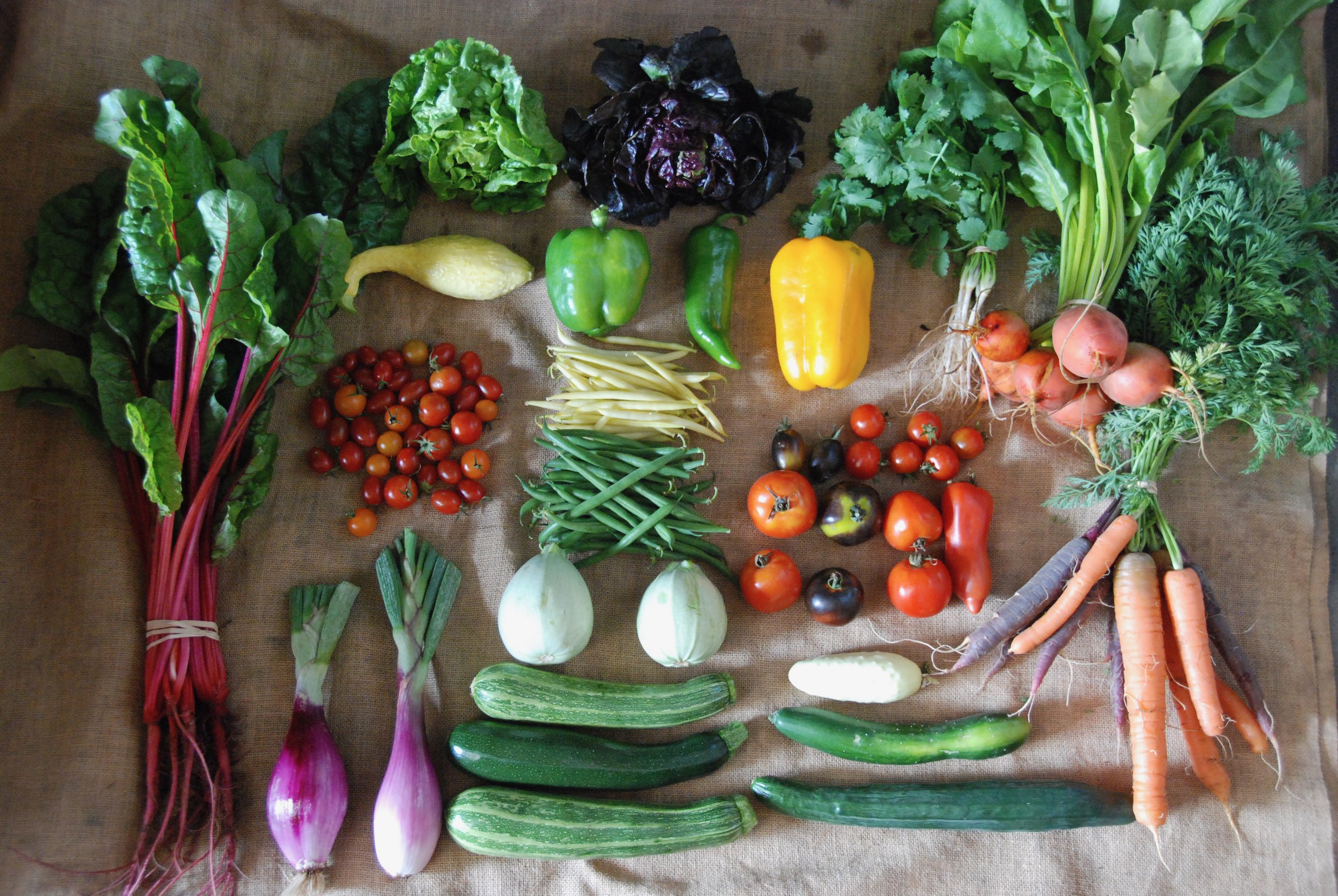Sowing and Transplanting in November
/CSA share from mid December - crops sown August - October
November - Here in Southern Victoria, this is the month for warm season crop transplanting! We will gain another 15 minutes of sunlight each week - even while the nights can still have a chill. Tomatoes, zucchini, capsicums, cucumbers have all been waiting for the night time temperatures to warm.
We have made a simple temperature chart to assist - here.
And as the weather really warms up, we sow beans, corn, pumpkins and more herbs and flowers direct into the fields to have a constant summer supply.
We also switch to sowing iceberg and gem lettuces which will cope well with summers heat.
Here are the crops we sow and transplant in November:
Transplant tomatoes once nighttime temperatures are between 13 - 15C
Zucchini, Summer Squash and Cucumbers
The nighttime temperatures are usually warm enough to transplant seedlings.
If your garden space is full, consider growing your cucumbers up a trellis.
We also successively plant zucchini, squash and cucumbers 3 times throughout the season. This keeps our plants strong, healthy, contained and productive! Our rule of thumb is when the plants produce their first flowers, it is time to sow the next round.
Capsicum, Eggplants and Chilies
Transplant eggplants, capsicum and chillies once nighttime temperatures are above 14C. We have found that if wait until day temperatures are above 17C, we have robust growth and early flowering
We start our pumpkins in soil blocks in the glasshouse now. This helps establish them ahead of birds and snails
A staple in late autumn, winter and early spring meals, dedicating space for these giant ramblers is rewarding.
Greens
Lettuces - sow now for January and February harvest
Icebergs like Crispino and Salinas 88 cope well with summer heat and make for a juicy, crunchy salad, sandwich and hamburger!
Colorful crisped lettuces such as Joker, Jester and Rosencrantz also thrive in summer heat.
Gem Lettuces like Eruption, Pandero, Jadeite, Double Density. These love the heat remaining sweet and juicy, grow quickly and can fit in to all the empty little spots of the garden adding colour. We sow every two weeks to keep a constant supply for salads and grilling!
Cos Lettuces like Flashy Troutback, Jadeite and Jericho perfect for summer bbq’s and ceasar salads. Served wedged with a smile dressing. Super easy to grow, heat loving, crunchy and gorgeous!
Orach is a heat loving spinach like leaf that can be deep purple to golden. We love adding it to salads, putting it under fish or BBQ chicken and sautéing it on its own
Rocket - for a constant supply, sow every two weeks
Celery - we continue to sow and transplant celery each month for a continuous supply
Although you may have just transplanted your first basil, we sow a second planting of basil in late November to keep us in constant supply through summer
We continue to successively sow coriander every two weeks- as the days grow longer, its desire to bolt or shoot up to flower increases
We usually sow parsley 3 times throughout the season to keep a strong supply
Dill is not only a favorite in potato salad, we love it in our cut flower bouquets. We sow it every six weeks to keep a constant supply
Perilla’s bright, minty perfume with hints of cinnamon and clove are not only delicious with fish or muddled into a mojito, with its long vase life, it also adds lovely colour to cut flower arrangements
Roots
Carrots - to keep a constant supply, we sow carrots ever 3 weeks from now through March!
Beetroot - we continue sowing these every month
Celeriac - we recommend sowing no later then mid-November for a large size bulb by Winter
Radish and salad turnips (see below about covering)
Parsnips - sow now to enjoy all winter
Optimum soil temperature for germination is 21–32°C. Plant when daytime soil temperatures average at least 16°C, or risk poor germination.
We successively sow spring onions from now through March. We use ‘Red Long of Tropea’ onions like spring onions as they are sweet and colorful and work well cooked and raw
We have successfully sown leeks in November for late Winter harvesting
Summer Cut Flowers of Zinnias, Tithonia and Cosmos
Edible flowers alyssum, calendula and nasturtium
Successive plantings of fillers such as Pennycress and mignonette
Sunflowers
Melons and Watermelon
Mid-Late November, we transplant melons and watermelons. We are trialing several new varieties this year searching for great cool season performers as these crops can perform well in warmer summers but poorly in cooler ones.
Sweet Potatoes and Potatoes
Our sweet potato slips are growing in the glasshouse and are usually transplanted mid November
We sow our potatoes mid - October - early November
Brassicas
We pause our brassica plantings from now until February. Although there are new varieties which thrive in the heat, with our limited space and need to rotate crops to prevent disease and maintain nutrient density, we reserved our space for Autumn brassicas.
Download our November guide
PLEASE NOTE - These recommendations are completely based on our 14 years of growing on this patch in Southern Victoria, Australia. See Key Information To Record For Future Success to understand on what we base this information.
















